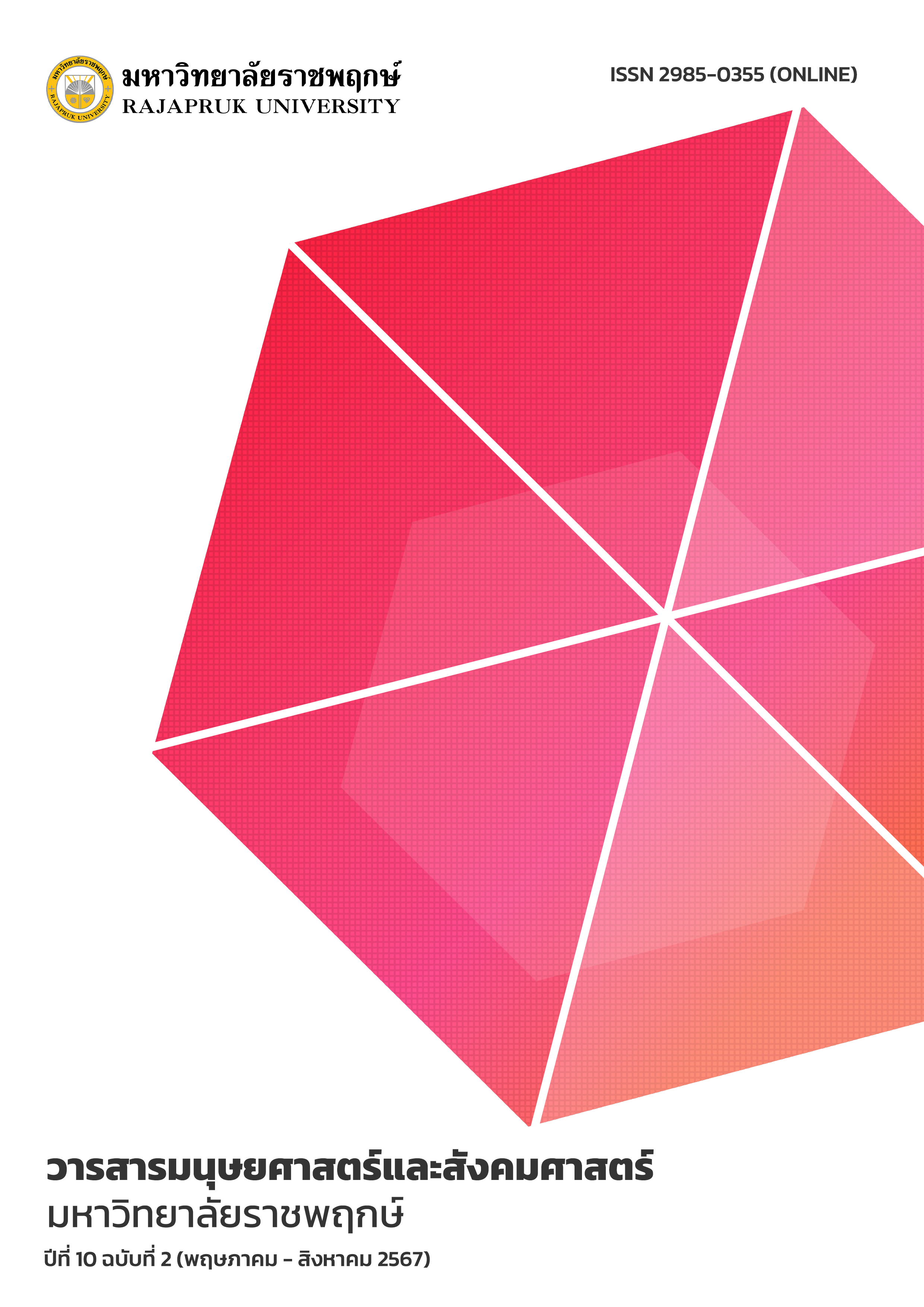Tourism Management Guidelines for Huay Nam Sai Village, Suan Phueng District, Ratchaburi Provinc
Main Article Content
Abstract
ABSTRACT
The Objective of this research was to study 1) the problems of tourism management,
2) analyze the internal and external situations of tourism management, and
3) propose a guideline for tourism management in Mon Huai Nam Sai Village, Village, Suan Phueng District, Ratchaburi Province This research was qualitative research methodology by studying research documents, participatory observation, in-depth interview and brainstorming. The sample was 21 people compound with the village committee of Mon Huai Nam Sai, restaurant business operator, accommodation business operators, merchandise and souvenir business operators, and villagers by purposive sampling.
The results of the research revealed that 1) Problems of Huai Nam Sai village tourism management in terms of administration, it was found that government agencies not take part in the administration. In terms of basic utilities, it was found that there were only 3 service points for toilets. It was found that the government not come to support any budget and public relations. It was found that the government not come to support or help publicize. 2) SWOT Analysis found that; 2.1) Strengths (S): The community has abundant natural resources. 2.2) Weaknesses (W): The tourist guide personnel is insufficient. 2.3) Opportunities (O): There is a tendency to have more tourists coming to travel. 2.4) Treat (T) lack of budget for the development of tourist attractions from the government. And 3) Guidelines for tourism management in Mon Huai Nam Sai Village, consisting of (a) implementation of measures to control and prevent the spread of the COVID-19 virus (b) public relations for tourism in Mon Huai Nam Sai Village through various media that reach more tourists with current media; (c) supporting the creation of community shops for people in the community to earn income; (d) integrating cooperation with government agencies to develop tourism; and (e) making signs to guide the way to facilitate tourists.
Article Details
References
กชธมน วงศ์คำ. (2562). การจัดการท่องเที่ยวโดยชุมชนบ้านหัวขัว ตำบลแกดำ อำเภอแกดำ จังหวัดมหาสารคาม. วารสารสันติศึกษาปริทรรศน์, 13(3): 1062-1078.
จักรีวัชระ กันบุรมย์ และ ชนิดา จิตตรุทธะ. (2565). ความร่วมมือระหว่างภาครัฐ ภาคเอกชนและภาคประชาสังคม ในการพัฒนาการท่องเที่ยวเชิงสร้างสรรค์ของชุมชนอย่างยั่งยืนกรณีศึกษา: จังหวัดนครราชสีมา ในกลุ่มจังหวัดนครชัยบุรินทร์. สถาบันรัฐประศาสนศาสตร์และนโยบายสาธารณะมหาวิทยาลัยรังสิต.
เทิดชาย ช่วยบำรุง. (2552). บทบาทขององค์กรปกครองส่วนท้องถิ่นกับการพัฒนาการท่องเที่ยวอย่างยั่งยืนบนฐานแนวคิดเศรษฐกิจพอเพียง. กรุงเทพฯ: สำนักพิมพ์คณะรัฐมนตรีและ
ราชกิจจานุเบกษา.
สำนักงานสภาพัฒนาการเศรษฐกิจและสังคมแห่งชาติ.แผนพัฒนาการท่องเที่ยว ฉบับที่ 13
(พ.ศ. 2564 – 2565). ค้นเมื่อวันที่ 13 ตุลาคม2565:https://nesdc.go.th
สำนักงานพัฒนาชุมชนจังหวัดราชบุรี. (2563). ข้อมูลทั่วไปจังหวัดราชบุรี. ค้นเมื่อวันที่ 13 ตุลาคม 2564, http://ratchaburi.go.th
สุไรดา กาซอ. (2561). แนวทางการจัดการการท่องเที่ยว พื้นที่ตำบลทุ่งหว้า อำเภอทุ่งหว้า จังหวัดสตูล. วิทยานิพนธ์หลักสูตรศิลปศาสตรมหาบัณฑิต สาขาการจัดการการท่องเที่ยวแบบบูรณาการ คณะการจัดการการท่องเที่ยว สถาบันบัณฑิตพัฒนบริหารศาสตร์.
Collier, A. & Harraway, S. (1997). Principle of Tourism. Auckland: Longman.
Miles, M. B., & Huberman, A. M. (1994). Qualitative Data Analysis: An Expanded Sourcebook. 3rd ed. Los Angeles, CA: SAGE.
Mill, R. & Morrison, A. M. (1992). The Tourism System and Introductory Text. New Jersey: Prince-Hall Intentional Inc.


